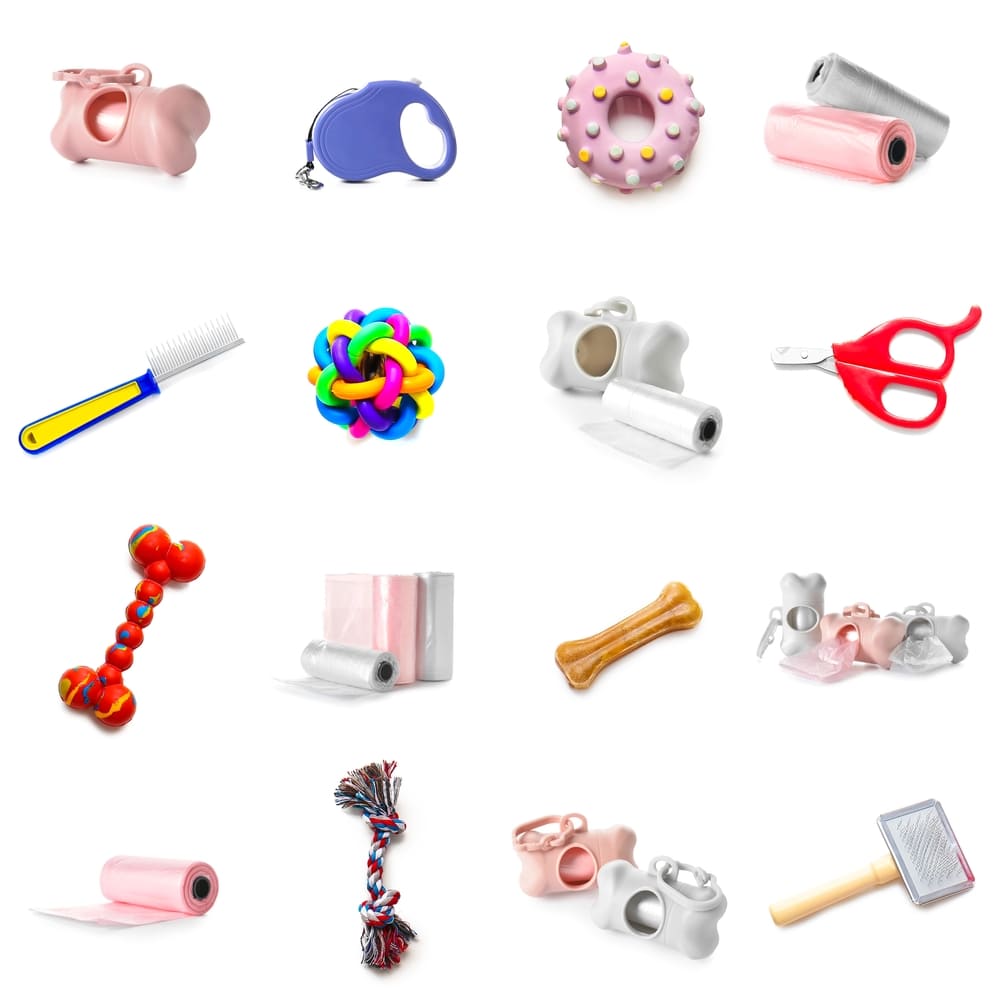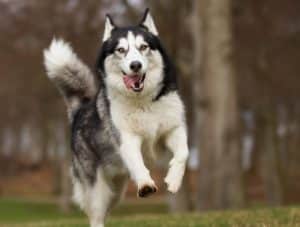Training Tools And Equipment Recommendations – If you have a furry friend at home who needs guidance and discipline, investing in the right dog training tools can make all the difference.
Whether you have a playful puppy or an adult dog, training them properly is essential to their well-being and overall harmony in your home.
Here’s a breakdown of your excellent guide to dog training tools, along with key takeaways and some considerations for owners.
Key Takeaways:
- The Right Tools Make a Difference: They’re not magic, but good equipment supports safe and effective training,
- Tools for Every Purpose: Each item serves a distinct role – from establishing control on walks (leashes, harnesses) to clear communication (clickers, whistles)
- Personalize Your Toolkit: Your dog’s size, breed, temperament, and your goals should all influence your choices.
- Safety and Comfort are Key: Choose well-made tools that fit properly and won’t cause your dog discomfort.
- Puppies Need Special Care: Gentle methods and positive reinforcement are essential for young learners.
Your Dog Training Tool Guide
You’ve outlined essential equipment and when each tool is especially useful:
- Leashes & Collars: Foundation for safe walks and control.
- Clickers & Whistles: Precise communication tools for marking good behavior and teaching commands from a distance.
- Treats & Treat Bags: Powerful motivators, making training fun for your dog. Bags offer easy access during sessions.
- Harnesses & Muzzles: Harnesses offer extra security for pullers. Muzzles, when used properly with a trainer, can help manage reactive dogs.
- Fetch Items: Build skills valuable for many dogs, especially hunting breeds
Additional Considerations
- Crate: Not listed, but a valuable tool for potty training, preventing destructive behavior, and offering a safe space.
- Training Treats: Opt for small, healthy treats reserved for training, making them more exciting.
- Long Lines: Offer more freedom than a short leash during recall training in safe, enclosed areas.
- Puzzle Toys: Mentally stimulating, rewarding problem-solving, and great for when you’re busy.
Choosing the Right Tools
- Talk to Your Vet or Trainer: They can offer personalized recommendations based on your dog’s needs.
- Quality Matters: Well-made equipment is safer and lasts longer.
- Try Before You Buy (If Possible): This helps ensure proper fit and comfort, especially for harnesses.
Puppy Training Tips
Your puppy-specific advice is spot-on! Here’s one thing to add:
- Socialization Tools: Puppy classes in controlled environments provide safe, guided socialization opportunities.
Let’s Talk About Your Dog!
To help you choose the perfect toolkit, tell me more:
- What breed and age is your dog?
- Do you have any specific training goals in mind?
- Any existing behavioral challenges you’d like to address?
Remember, the right tools, along with patience and positive methods, will turn your pet into a happy, well-behaved companion!
List Of Dog Training Tools:
Training your dog isn’t just about teaching him basic commands; it is also critical for their safety and the safety of others.
The right tools can aid in effective training, help you set boundaries, and ensure that your dog grows up to be obedient and well-behaved. From leashes and collars to clickers and treat bags, each item serves a specific purpose in the training process.
Learning Leashes And Collars:
Leashes and collars are the main tools needed to train a dog. A strong leash helps you maintain control during walks and prevents your dog from getting away or getting into potentially dangerous situations.
Collars, on the other hand, allow you to attach ID tags and make it easier to attach a leash. It is important to choose the correct size and material of leashes and collars to ensure your dog’s comfort and safety.
Clickers:
Clickers are effective tools for reinforcing positive behavior and communicating with your dog during training. The clicker makes a distinct sound that signals to your dog that he has performed the desired action correctly.
The clicker is fast and precise, allowing good behavior to be reinforced instantly. It is also emotionally neutral, unlike our voices, guaranteeing clear communication with the animal.
Whistles:
Whistles, on the other hand, can be used for memory training or to get your dog’s attention from a distance.
Both tools are useful for instructing new commands and rewarding your dog for their progress. The whistle is a training tool often associated with working dogs, but it can be just as effective for a guard dog.
Training a guard dog requires mutual understanding and effective communication between the owner and his dog.
Choosing the right tools, such as the harness, clicker, and whistle, can greatly facilitate this process. It is essential to remember that patience, consistency, and positivity are the keys to successful training.
Bags Of Treats And Treats:
Reward-based training is very effective, and treat bags are a convenient way to carry and distribute treats during training.
They provide quick access to rewards, allowing you to immediately reinforce good behavior. Treats can be used as positive reinforcement to motivate your dog and make the training process more enjoyable for him.
Harnesses And Muzzles:
Harnesses are an alternative to collars and provide better control, especially for dogs that tend to drag during walks.
They distribute pressure evenly across the chest, reducing the risk of injury to your dog’s neck. Muzzles, although often misunderstood, can be a useful tool for training dogs exhibiting aggressive behavior. Muzzles allow you to safely acclimate your dog to a variety of situations and socialize him in a controlled environment.
Fetching Items Are Made In The Shape Of A Dumbbell:
With the help of this object, they teach to bring diarrhea. Over time, the “dumbbells” become heavier, bringing the weight up to 7-9 kg. Such training is of particular importance for hunting dogs.
Choosing the Best Equipment Training Methods:
Choosing the right training tools for your dog can make a big difference in the effectiveness of your training. Here are a few factors to consider when making your decision:
Breed And Size Of Dogs:
Different breeds and sizes may require different tools. For example, a small dog may benefit from using a harness rather than a collar because it has a thinner neck.
On the other hand, larger breeds that are prone to pulling may require a specially designed no-pulling harness. Understanding your dog’s breed and size is critical to choosing the right tools for comfort and control.
Training Goals:
Consider the specific behaviors you want to focus on during your training. If you prefer to walk on a loose leash, you will need a strong leash and a comfortable collar or harness.
Alternatively, if you are training your dog agility, you may want to use tunnels, jumps, or hoops to create an obstacle course. Customizing your training equipment to suit your goals will increase the progress and success of your training program.
Comfort And Safety:
When choosing the best training tools, always prioritize your dog’s comfort and safety. Avoid materials that may cause discomfort or allergic reactions.
Make sure collars, harnesses, and muzzles fit correctly without causing any restrictions or harm. It is essential to invest in a high-quality tool that is durable and tested for safety.
Puppy Training Tips:
You can start training your puppy as soon as he arrives at your home. It is wrong to believe that a puppy must be at least 6 months old before starting its instruction.
The younger he is, the easier it is. A young puppy is also an impatient learner: think of him as a fluffy little sponge, waiting to soak up everything you can teach him!
Dog On Leash At Home:
Here are some useful tips to get you off to a good start on the journey of training your puppy. Start with short sessions. Keep instruction sessions short and sweet.
A young puppy loses concentration easily, so it is better to do several 5-minute sessions each day rather than one half-hour session.
Choose The Best Time:
Only “work” with your puppy if you are in a good mood. Dogs are very receptive to human emotions and can spot if you are stressed or cranky.
Be Positive:
Always end a puppy training session on a positive note, with an exercise that your dog can do easily, to end with success. For your puppy, this positively reinforces the fact that education is rewarding!
No Distractions:
First, train your puppy without allowing him to be distracted. Teach him the basics in a peaceful place and only add distractions later, so your dog gets used to varied environments.
Don’t Be Stingy With Rewards:
Training a puppy should always be reward-oriented, so use toys, rewards, and cuddles a lot. Negative techniques, based on punishment, are cruel and do not work for training a puppy.
You should also never use a choke collar when familiarizing your puppy to walk on a leash because you could injure your dog’s neck very easily.
Avoid Excess Treats:
Once your puppy understands an exercise, substitute food rewards with toys, or subtract them from his daily ration to avoid weight gain.
Conclusion:
Training your dog is an investment in his well-being and the bond you share. With the right training tool, you can effectively teach your furry friend obedience, discipline, and good behavior.
From leashes and collars to clickers and treat bags, there are many tools to help you with the training process. Be sure to choose the tool that is appropriate for your dog’s breed, size, and specific goals. With patience, consistency, and the right tool, you can create a positive training experience and raise a well-trained, happy dog.
“Understanding the nuances of effective training techniques is essential for any learning process, be it for humans or animals. In the realm of pet care, Dog Training (Course) is particularly vital as it not only shapes obedient behavior but also fosters a bond between the pet and its owner. It offers an extensive course that is cost-effective, with the entire course priced at just the equivalent of what a dog trainer might charge for a single hour ($40 to $120). It covers a wide array of behaviours including Potty Training, Lunging, Jumping, Digging, Whining, Chewing, Excessive Barking, Impulse Control, Hyperactivity, Ignoring Commands, and much more. Plus, they provide a 100% money-back guarantee if you cancel within 60 days, ensuring that your investment is risk-free.”








